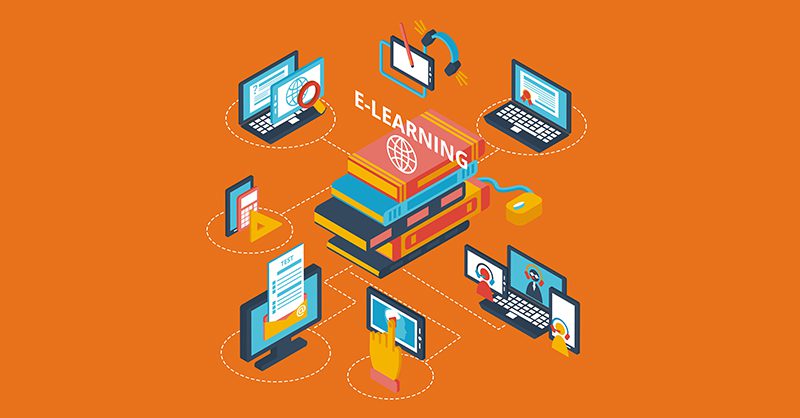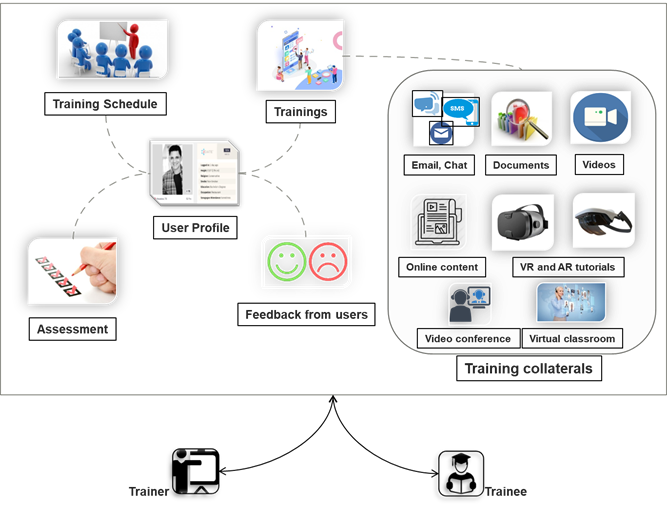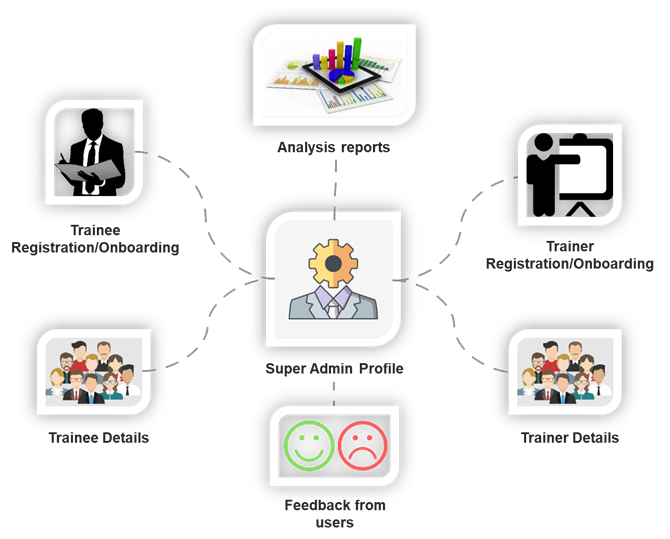May 13th, 2020
Category: Automation,Innovation,Web Applications
No Comments
Posted by: Team TA

“Technology will become the wings that will allow the educational world to fly farther and faster than ever before – if we will allow it”
~ Anonymous
In our previous blog, we gave an overview of what an e-learning environment is and how it evolved over the years. In the current scenario, where gatherings of any kind cannot be held, physical classrooms have been replaced by virtual classrooms. Education has turned a new leaf as we witness the wide-spread adoption of e-learning systems – either through third-party solutions or custom made.
An e-learning platform can be employed primarily by an educational institution that aims at providing virtual classrooms through distance education or in similar situations as in current times. However, organizations/companies also tend to have a collaborative training system in place for training fresher employees/experienced personnel through inter or intradepartmental training procedures that helps in streamlining their operations.
What are the major modules that make up an e-learning system? Let’s find out.
As we all know, it’s the teacher and student entities that create the basic learning ecosystem. The basic module of a trainer and trainee comprises of the following:
Trainer-Trainee Ecosystem
- Scheduling/Training Plan: This feature enables the trainer or coach to prepare a training schedule. This plan comprises of the total number of hours for classes as well as assessment. The sessions are taken following this plan.
- Training and Collaterals: The trainees undergo the training as scheduled. The trainer/coach creates or adds the necessary content for supporting the classes which can be accessed by the trainees. The primary mode of classes will be through video conferencing and virtual classrooms. Supporting documents and audiovisual media can be stored and accessed. Virtual hands-on training can also be supported based on the requirement (most applicable for Industrial level training and virtual laboratory experiments). A direct messaging option is also possible between trainer and trainees for clarification of queries during and after the session.
- Assessments and Feedback: For industrial or certificate-oriented training, assessments are a very useful tool for gauging the progress of candidate trainees. The feedback received and assessment results reflect the fruits of the program and are very helpful for course-corrections and in improvising the system.
- User Profile/Dashboard: Through this section, both trainees and trainers can get a bird’s eye as well as a detailed view of their progress as the usage history is reflected here. The user profile is necessary for tracking the user flow and a personal dashboard for each user will prove helpful in providing insights for the users.
As with any system, an admin user is required here that overviews and manage this ecosystem. The admin can be an individual academician/subject matter expert (who may also be the content creator), the head or person assigned by the head of an educational institution, or an organization. The admin module of the training platform comprises of the following:
The Admin Module
The admin user can be an individual senior academician (who may also be the content creator), educational institution/head, or an organization/head. The admin module of the training platform comprises of the following:
- User Registration/Onboarding: The admin user manages and controls user access and user roles. If it is a small ecosystem with a single coach who himself is the product owner with a limited number of trainees, the platform can be customized to suit the requirement. If it’s an educational institution or an organization handling multiple faculties and a larger trainee base, a super admin or group of sub-admins can manage the assignment of trainers to trainees and so on.
- Assessments/Feedback Reports: The admin users will also have master control over the assessments and store the same in the database. Feedback by the users – trainers and trainees alike can also be viewed by the admins and help formulate plans to improvise the system.
The above mentioned are the basic modules as required in an e-learning system. This e-learning ecosystem can be customized based on the requirements of the product owners. UI/UX, scalability, and adaptability to the latest technology are primary requirements to be met while creating such a system.
In the case of individual led or other online courses, payment systems can also be integrated into this system where participants can make online payments to access the course and supporting materials.
For organization/industry level implementation, this system can be integrated into the HRMS for validating employees at their time of appraisals, job promotions, etc.
Application Suited for:
Educational Institutions | Organization/Industry level training | Individual Tutors | Virtual Certification Courses
Type:
Web/Mobile Application
Are you planning to implement an e-learning platform? Looking for teams who can help you with software development?
Team TA is here. With our expertise in web and mobility solutions employing the technology at just the right requirements, we can provide you the software development support you are looking for. From the idea conception stage to minimum viable product to a self-sustaining ecosystem in its own right with systematic quality analysis procedures, rest assured. Please feel free to contact us for more information on how we can support you in your endeavor.

